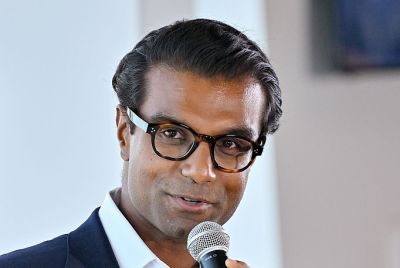Start-ups fuel growth in super-fast trading
Tumbling technology costs have opened potentially lucrative ultra-fast trading strategies to tiny start-up players, fuelling growth of the opaque and controversial business across Europe and the United States.
Backed by private equity, or armed with bonuses earned at banks, traders have been encouraged by an 80 percent or greater fall in the cost of setting up lightning-fast systems over the past five years, trading software provider Portware said.
The numbers of these firms has exploded, Richard Balarkas, chief executive of broker Instinet Europe, said at the Reuters Global Exchanges and Trading Summit last week.
I hear venture capitalists are giving money to guys coming straight out of MIT (Massachusetts Institute of Technology) and setting up desks, he said.
In high-frequency trading, firms such as hedge funds use lightning-fast computers to beat other investors to profitable trades, sometimes moving their computers physically next to an exchange to gain an extra advantage.
It is a highly secretive world, where the fear to give away trading secrets is omnipresent and there is often no accountability to external investors.
Europe could see the biggest rise in high-frequency trading, being a less mature market. Ultra-fast trading accounts for 30-50 percent of equity market volumes, against 60-70 percent in the United States, the UK Financial Services Authority said.
Martin Cornish, managing partner of law firm Katten Muchin Rosenman Cornish in London, said he is now working with many more traders emerging from banks, while his U.S. colleagues were seeing the same trend.
We've seen definitely a big increase (in start-ups) over the last few years, out of major banks, he said.
High-frequency trading strategies can include making markets in a stock on a wide spread or very quickly detecting a large would-be buyer or seller in the market and then trading on it.
LOWER COSTS
The cost for new launches to set up one of these systems has dropped by a fifth or more over five years, said Scott DePetris, global head of accounts at Portware.
Recent technological advances, such as programs that can place trades based on news reports, have become more widely available, while start-ups can now buy a selection of ready-made algorithms or trading systems, rather than build their own.
High-frequency firms no longer have to use their own computer systems to support their activities, DePetris said.
Exchanges, connectivity providers, trading system vendors and other service providers offer high-tech software that addresses the needs of high frequency trading firms, all of which lowers the barriers to entry for firms looking to enter the market for the first time.
Mark Hemsley, chief executive of electronic trading platform BATS Europe, for whom 35 percent of turnover comes from ultra-fast traders, said there was also plenty of potential for growth in Europe as U.S. firms open up offices here.
It will grow because it's relatively early stage for high-frequency trading here ... You're seeing a lot of American firms start to see that and come over here, he said.
(Editing by Andrew Macdonald)
© Copyright Thomson Reuters {{Year}}. All rights reserved.





















